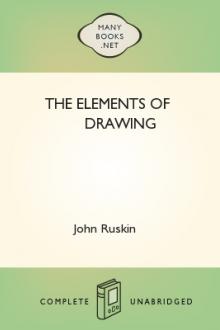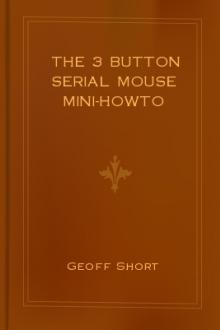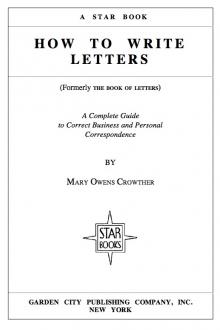The Elements of Drawing by John Ruskin (smart books to read .txt) 📕

- Author: John Ruskin
- Performer: -
Book online «The Elements of Drawing by John Ruskin (smart books to read .txt) 📕». Author John Ruskin
First, in Galleries of Pictures:
1. You may look, with trust in their being always right, at Titian, Veronese, Tintoret, Giorgione, John Bellini, and Velasquez; the authenticity of the picture being of course established for you by proper authority.
2. You may look with admiration, admitting, however, question of right and wrong,[75] at Van Eyck, Holbein, Perugino, Francia, Angelico, Leonardo da Vinci, Correggio, Vandyck, Rembrandt, Reynolds, Gainsborough, Turner, and the modern Pre-Raphaelites.[76] You had better look at no other painters than these, for you run a chance, otherwise, of being led far off the road, or into grievous faults, by some of the other great ones, as Michael Angelo, Raphael, and Rubens; and of being, besides, corrupted in taste by the base ones, as Murillo, Salvator, Claude, Gaspar Poussin, Teniers, and such others. You may look, however, for examples of evil, with safe universality of reprobation, being sure that everything you see is bad, at Domenichino, the Carracci, Bronzino, and the figure pieces of Salvator.
Among those named for study under question, you cannot look too much at, nor grow too enthusiastically fond of, Angelico, Correggio, Reynolds, Turner, and the Pre-Raphaelites; but, if you find yourself getting especially fond of any of the others, leave off looking at them, for you must be going wrong some way or other. If, for instance, you begin to like Rembrandt or Leonardo especially, you are losing your feeling for color; if you like Van Eyck or Perugino especially, you must be getting too fond of rigid detail; and if you like Vandyck or Gainsborough especially, you must be too much attracted by gentlemanly flimsiness.
257. Secondly, of published, or otherwise multiplied, art, such as you may be able to get yourself, or to see at private houses or in shops, the works of the following masters are the most desirable, after the Turners, Rembrandts, and Dürers, which I have asked you to get first:
1. Samuel Prout.[77]
All his published lithographic sketches are of the greatest value, wholly unrivaled in power of composition, and in love and feeling of architectural subject. His somewhat mannered linear execution, though not to be imitated in your own sketches from Nature, may be occasionally copied, for discipline's sake, with great advantage: it will give you a peculiar steadiness of hand, not quickly attainable in any other way; and there is no fear of your getting into any faultful mannerism as long as you carry out the different modes of more delicate study above recommended.
If you are interested in architecture, and wish to make it your chief study, you should draw much from photographs of it; and then from the architecture itself, with the same completion of detail and gradation, only keeping the shadows of due paleness,—in photographs they are always about four times as dark as they ought to be,—and treat buildings with as much care and love as artists do their rock foregrounds, drawing all the moss, and weeds, and stains upon them. But if, without caring to understand architecture, you merely want the picturesque character of it, and to be able to sketch it fast, you cannot do better than take Prout for your exclusive master; only do not think that you are copying Prout by drawing straight lines with dots at the end of them. Get first his "Rhine," and draw the subjects that have most hills, and least architecture in them, with chalk on smooth paper, till you can lay on his broad flat tints, and get his gradations of light, which are very wonderful; then take up the architectural subjects in the "Rhine," and draw again and again the groups of figures, etc., in his "Microcosm," and "Lessons on Light and Shadow." After that, proceed to copy the grand subjects in the "Sketches in Flanders and Germany;" or "in Switzerland and Italy," if you cannot get the Flanders; but the Switzerland is very far inferior. Then work from Nature, not trying to Proutize Nature, by breaking smooth buildings into rough ones, but only drawing what you see, with Prout's simple method and firm lines. Don't copy his colored works. They are good, but not at all equal to his chalk and pencil drawings; and you will become a mere imitator, and a very feeble imitator, if you use color at all in Prout's method. I have not space to explain why this is so, it would take a long piece of reasoning; trust me for the statement.
2. John Lewis.
His sketches in Spain, lithographed by himself, are very valuable. Get them, if you can, and also some engravings (about eight or ten, I think, altogether) of wild beasts, executed by his own hand a long time ago; they are very precious in every way. The series of the "Alhambra" is rather slight, and few of the subjects are lithographed by himself; still it is well worth having.
But let no lithographic work come into the house, if you can help it, nor even look at any, except Prout's, and those sketches of Lewis's.
3. George Cruikshank.
If you ever happen to meet with the two volumes of "Grimm's German Stories," which were illustrated by him long ago, pounce upon them instantly; the etchings in them are the finest things, next to Rembrandt's, that, as far as I know, have been done since etching was invented. You cannot look at them too much, nor copy them too often.
All his works are very valuable, though disagreeable when they touch on the worst vulgarities of modern life; and often much spoiled by a curiously mistaken type of face, divided so as to give too much to the mouth and eyes and leave too little for forehead, the eyes being set about two thirds up, instead of at half the height of the head. But his manner of work is always right; and his tragic power, though rarely developed, and warped by habits of caricature, is, in reality, as great as his grotesque power.
There is no fear of his hurting your taste, as long as your principal work lies among art of so totally different a character as most of that which I Have recommended to you; and you may, therefore, get great good by copying almost anything of his that may come in your way; except only his illustrations, lately published, to "Cinderella," and "Jack and the Bean-stalk," and "Tom Thumb," which are much overlabored, and confused in line. You should get them, but do not copy them.
4. Alfred Rethel.
I only know two publications by him; one, the "Dance of Death," with text by Reinick, published in Leipsic, but to be had now of any London bookseller for the sum, I believe, of eighteen pence, and containing six plates full of instructive character; the other, of two plates only, "Death the Avenger," and "Death the Friend." These two are far superior to the "Todtentanz," and, if you can get them, will be enough in themselves to show all that Rethel can teach you. If you dislike ghastly subjects, get "Death the Friend" only.
5. Bewick.
The execution of the plumage in Bewick's birds is the most masterly thing ever yet done in wood-cutting; it is worked just as Paul Veronese would have worked in wood, had he taken to it. His vignettes, though too coarse in execution, and vulgar in types of form, to be good copies, show, nevertheless, intellectual power of the highest order; and there are pieces of sentiment in them, either pathetic or satirical, which have never since been equaled in illustrations of this simple kind; the bitter intensity of the feeling being just like that which characterizes some of the leading Pre-Raphaelites. Bewick is the Burns of painting.
6. Blake.
The "Book of Job," engraved by himself, is of the highest rank in certain characters of imagination and expression; in the mode of obtaining certain effects of light it will also be a very useful example to you. In expressing conditions of glaring and flickering light, Blake is greater than Rembrandt.
7. Richter.
I have already told you what to guard against in looking at his works. I am a little doubtful whether I have done well in including them in this catalogue at all; but the imaginations in them are so lovely and numberless, that I must risk, for their sake, the chance of hurting you a little in judgment of style. If you want to make presents of story-books to children, his are the best you can now get; but his most beautiful work, as far as I know, is his series of Illustrations to the Lord's Prayer.
8. Rossetti.
An edition of Tennyson, lately published, contains wood-cuts from drawings by Rossetti and other chief Pre-Raphaelite masters. They are terribly spoiled in the cutting, and generally the best part, the expression of feature, entirely lost;[78] still they are full of instruction, and cannot be studied too closely. But observe, respecting these wood-cuts, that if you have been in the habit of looking at much spurious work, in which sentiment, action, and style are borrowed or artificial, you will assuredly be offended at first by all genuine work, which is intense in feeling. Genuine art, which is merely art, such as Veronese's or Titian's, may not offend you, though the chances are that you will not care about it; but genuine works of feeling, such as "Maud" or "Aurora Leigh" in poetry, or the grand Pre-Raphaelite designs in painting, are sure to offend you: and if you cease to work hard, and persist in looking at vicious and false art, they will continue to offend you. It will be well, therefore, to have one type of entirely false art, in order to know what to guard against. Flaxman's outlines to Dante contain, I think, examples of almost every kind of falsehood and feebleness which it is possible for a trained artist, not base in thought, to commit or admit, both in design and execution. Base or degraded choice of subject, such as you will constantly find in Teniers and others of the Dutch painters, I need not, I hope, warn you against; you will simply turn away from it in disgust; while mere bad or feeble drawing, which makes mistakes in every direction at once, cannot teach you the particular sort of educated fallacy in question. But, in these designs of Flaxman's, you have gentlemanly feeling, and fair knowledge of anatomy, and firm setting down of lines, all applied in the foolishest and worst possible way; you cannot have a more finished example of learned error, amiable want of meaning, and bad drawing with a steady hand.[79] Retzsch's outlines have more real material in them than Flaxman's, occasionally showing true fancy and power; in artistic principle they are nearly as bad, and in taste, worse. All outlines from statuary, as given in works on classical art, will be very hurtful to you if you in the least like them; and nearly all finished line engravings. Some particular prints I could name which possess instructive qualities, but it would take too long to distinguish them, and the best way is to avoid line engravings of figures altogether.[80] If you happen to be a rich person, possessing quantities of them, and if you are fond of the large finished prints from Raphael, Correggio, etc., it is wholly impossible that you can make any progress in knowledge of real art till you





Comments (0)